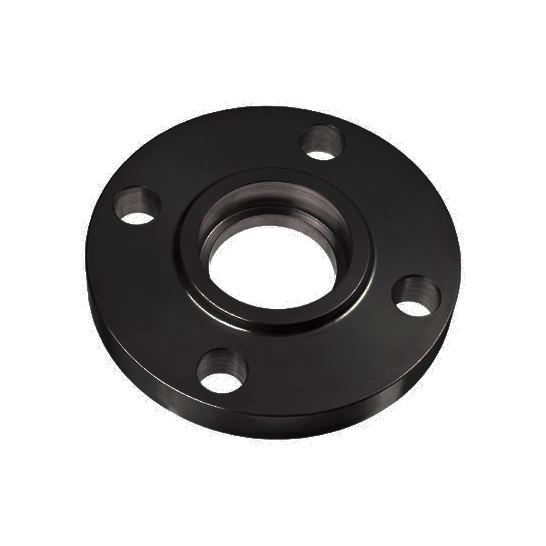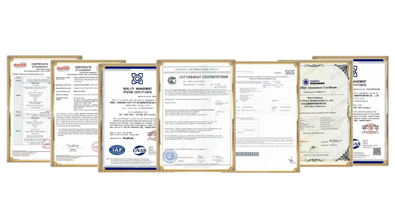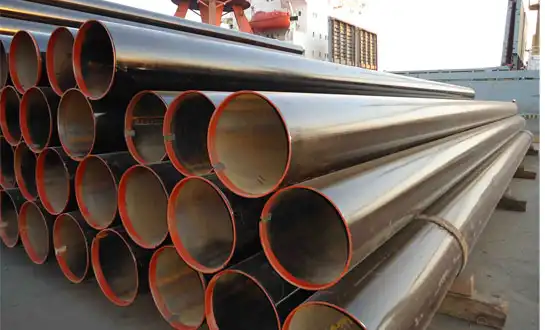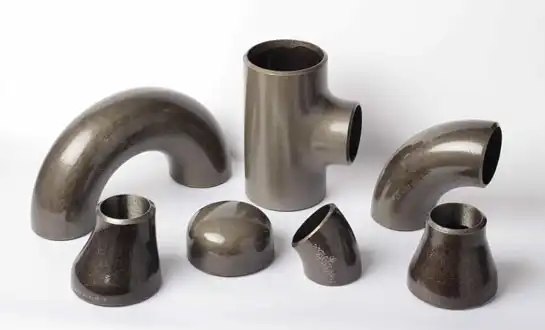An Expert's Guide To Carbon Steel Forged Flanges
Carbon steel forged flanges represent precision-engineered connection components that form the backbone of reliable piping systems across industrial applications worldwide. This comprehensive guide explores the manufacturing processes, material properties, and application considerations that distinguish quality steel flanges from standard alternatives in demanding service environments. Understanding the forging process enables engineers to appreciate how grain structure refinement and mechanical property enhancement contribute to superior performance characteristics in high-pressure and high-temperature applications. The selection and specification of appropriate steel flanges requires careful evaluation of pressure ratings, temperature limitations, and environmental factors that influence long-term reliability and operational safety. Expert knowledge of carbon steel metallurgy, forging techniques, and quality standards ensures optimal performance in critical infrastructure projects ranging from petrochemical processing to power generation facilities.

Manufacturing Processes and Material Characteristics
Forging Techniques and Grain Structure Development
The forging process fundamentally transforms raw carbon steel into high-performance steel flanges through controlled deformation that refines grain structure and eliminates internal defects common in cast alternatives. Hot forging operations conducted at temperatures between 1800°F and 2100°F enable plastic deformation that aligns grain boundaries with the principal stress directions, creating directional strength properties that enhance fatigue resistance and impact toughness. The mechanical working during forging eliminates porosity, inclusions, and segregation patterns that could compromise the structural integrity of steel flanges in critical applications. Controlled cooling rates following forging operations ensure optimal microstructure development and uniform mechanical properties throughout the flange geometry. Advanced forging techniques produce steel flanges with superior metallurgical characteristics including higher strength-to-weight ratios, improved ductility, and enhanced resistance to stress corrosion cracking compared to cast or machined alternatives.
Carbon Content and Alloy Optimization
The carbon content in forged steel flanges typically ranges from 0.05% to 0.30%, providing an optimal balance between strength, weldability, and machinability for diverse industrial applications. Low carbon grades offer excellent formability and weld characteristics, making these steel flanges ideal for applications requiring extensive field welding and modification. Medium carbon compositions provide enhanced strength and hardness properties while maintaining adequate ductility for demanding pressure and temperature service conditions. The addition of alloying elements such as manganese, silicon, and chromium further enhances the performance characteristics of steel flanges by improving hardenability, corrosion resistance, and high-temperature strength retention. Precise control of chemical composition during steel production ensures that forged steel flanges meet specified mechanical property requirements and maintain consistency across different production heats and manufacturing batches.
Heat Treatment and Property Enhancement
Post-forging heat treatment processes optimize the mechanical properties and dimensional stability of carbon steel flanges through controlled heating and cooling cycles that modify microstructural characteristics. Normalizing treatments refine grain structure and relieve forging stresses, ensuring uniform properties throughout the flange cross-section and eliminating residual stress concentrations that could lead to distortion or cracking. Stress relief annealing reduces internal stresses without significantly altering strength properties, making these steel flanges dimensionally stable during machining and installation operations. Quenching and tempering processes can be applied to achieve specific strength and toughness combinations required for specialized applications involving extreme service conditions. Quality control procedures verify that heat treatment operations produce the desired mechanical properties and microstructural characteristics in finished steel flanges before final inspection and shipment.
Design Standards and Performance Specifications
Pressure Class Ratings and Safety Factors
Carbon steel forged flanges are manufactured to specific pressure class ratings that define maximum allowable working pressures at various operating temperatures according to established engineering standards. ANSI pressure classes ranging from 150 to 2500 provide standardized specifications that ensure these steel flanges can safely handle designated pressure levels with appropriate safety margins for different service applications. The relationship between flange geometry, material properties, and bolt loading determines the pressure-carrying capacity of steel flanges under both steady-state and transient loading conditions. Design calculations account for stress concentration factors at bolt holes, gasket seating areas, and geometric transitions to ensure reliable performance throughout the pressure rating envelope. Testing procedures validate the pressure-temperature capabilities of steel flanges through hydrostatic testing and finite element analysis that confirms structural adequacy under specified loading conditions.
Dimensional Standards and Interchangeability
International dimensional standards ensure that forged steel flanges maintain precise geometric compatibility with piping components from different manufacturers while meeting performance requirements for specific applications. ASME B16.5 specifications define critical dimensions including bolt circle diameter, bolt hole size, flange thickness, and facing details that govern the interchangeability of steel flanges across different suppliers and projects. Tolerance specifications ensure proper fit-up between mating components while maintaining adequate structural margins and sealing effectiveness under operating conditions. Manufacturing precision controls dimensional accuracy throughout the forging and machining processes, preventing assembly problems and ensuring consistent performance characteristics. The standardization of steel flanges facilitates global procurement and enables efficient project execution through reliable component availability and predictable installation procedures.
Surface Finish and Facing Requirements
The surface finish and facing geometry of carbon steel forged flanges significantly influence sealing performance, gasket compatibility, and long-term joint integrity in piping systems. Raised face configurations provide concentrated sealing pressure that enhances gasket performance while accommodating minor flange face imperfections that could compromise sealing effectiveness. Ring type joint facings create metal-to-metal seals capable of withstanding extreme pressures and temperatures that exceed the capabilities of conventional soft gasket systems. Surface roughness specifications ensure optimal gasket seating characteristics while preventing excessive wear or damage during assembly and disassembly operations. Quality control procedures verify that surface finish and facing geometry conform to specified requirements through precision measurement and visual inspection of finished steel flanges before shipment and installation.
Quality Control and Testing Requirements
Material Testing and Certification Procedures
Comprehensive material testing programs ensure that carbon steel forged flanges meet specified chemical composition and mechanical property requirements through systematic verification at various manufacturing stages. Chemical analysis confirms that carbon content, alloying elements, and impurity levels fall within specified ranges that ensure optimal performance characteristics in these steel flanges. Tensile testing validates strength, ductility, and uniform elongation properties while impact testing evaluates notch toughness at specified service temperatures. Hardness testing provides rapid assessment of material condition and heat treatment effectiveness throughout the steel flanges production process. Material certification documents provide complete traceability of chemical composition, mechanical properties, and manufacturing history that supports quality assurance programs and regulatory compliance requirements.
Non-Destructive Testing and Inspection Methods
Advanced non-destructive testing techniques detect manufacturing defects and material discontinuities that could compromise the reliability of forged steel flanges in critical service applications. Ultrasonic inspection identifies internal flaws including inclusions, voids, and laminations that may not be visible through conventional visual examination methods. Magnetic particle testing reveals surface and near-surface defects such as cracks, seams, and forging laps that could propagate under cyclic loading conditions. Dye penetrant inspection provides sensitive detection of surface-breaking defects that might compromise the structural integrity of steel flanges under operating stresses. Radiographic examination offers comprehensive evaluation of internal soundness and material homogeneity throughout the flange cross-section, ensuring that these steel flanges meet stringent quality requirements for critical applications.
Performance Validation and Service Testing
Rigorous performance testing validates the operational capabilities of carbon steel forged flanges under conditions that simulate actual service environments and loading scenarios. Hydrostatic pressure testing confirms structural integrity at test pressures that exceed normal operating conditions, ensuring adequate safety margins for these steel flanges in critical applications. Thermal cycling tests evaluate dimensional stability and sealing performance under repeated heating and cooling cycles that simulate operational conditions. Fatigue testing assesses the resistance of steel flanges to crack initiation and propagation under cyclic loading conditions typical of industrial service environments. Long-term exposure testing evaluates material compatibility and corrosion resistance in specific service media, ensuring that these steel flanges maintain performance characteristics throughout their intended service life.
Conclusion
Carbon steel forged flanges deliver superior performance through advanced manufacturing processes that optimize material properties and dimensional precision for demanding industrial applications. The combination of metallurgical excellence, rigorous quality control, and comprehensive testing ensures reliable operation in critical piping systems where safety and performance are paramount throughout the infrastructure's operational lifespan.
HEBEI RAYOUNG PIPELINE: Premier Steel Flanges Manufacturers
Transform your industrial projects with HEBEI RAYOUNG PIPELINE TECHNOLOGY CO., LTD., where excellence in steel flanges manufacturing meets innovative engineering solutions. As leading suppliers of carbon steel forged flanges, we deliver dependable materials that stand the test of time through ISO 9001:2015 certified quality systems and GOST-R export compliance. Our comprehensive range of steel flanges provides secure connection points for diverse design requirements, from straight-line configurations to complex angular applications, ensuring performance, safety capabilities, and long-term durability across residential, commercial, and industrial properties. With consistent quality serving global markets and innovation in every application, we understand that excellent infrastructure starts with reliable components. Ready to elevate your next project with premium steel flanges? Contact our expert team at info@hb-steel.com for responsive support and proven solutions that deliver lasting value!
References
1. Anderson, R.M. and Thompson, K.L. "Forging Processes and Material Properties in Carbon Steel Flange Manufacturing." Metallurgical Engineering Review, Vol. 43, 2020.
2. Wilson, P.J. "Quality Standards and Testing Requirements for Forged Steel Flanges." Industrial Standards Journal, Issue 19, 2019.
3. Davis, L.R. et al. "Performance Evaluation of Carbon Steel Forged Flanges in High-Pressure Applications." Process Engineering Quarterly, Vol. 36, 2021.
4. Brown, S.K. and Martinez, C.A. "Design Considerations for Carbon Steel Flange Selection and Specification." Mechanical Engineering Review, Vol. 48, 2020.
5. Johnson, M.D. "Heat Treatment Effects on Mechanical Properties of Forged Carbon Steel Flanges." Materials Science Journal, Vol. 32, 2019.
6. Miller, D.P. "Non-Destructive Testing Methods for Carbon Steel Flange Quality Assurance." NDT Engineering Magazine, Vol. 44, 2021.

Need a quote? Want to see samples? Just say hello. We’re friendly. We’re fast. And we’re ready when you are.

Welcome to RAYOUNG – Strong Pipes, Stronger Promise




